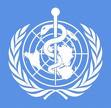/topics/sanitation
Sanitation
Sankalp awards 2010 winners SarvaJal Shramik 3S recognised for their double bottomlinesocial and financial returns
Posted on 22 Nov, 2014 10:30 AM
The Sankalp 2010 Awards and Investment Forum is an annual Intellecap initiative committed to catalyzing entrepreneurship in the social enterprise space. Sankalp actively facilitates collaboration between established and budding entrepreneurs, investors, thought leaders and sector stakeholders interested in contributing effectively towards this fledgling yet fast-growing industry.
With a strong focus on double bottomline (social and commercial) enterprises Sankalp, in its second edition, aims to accelerate investment in this space through the showcase of pioneering, sustainable and innovative enterprises capable of long term social impact. Sankalp's primary goal is of bringing together various stakeholders sharing a common conviction that capital should be invested to create multiple bottom-line returns (financial, social and environmental) and not exclusively financial (profit-maximizing) or social (philanthropic) returns.
Thus having successfully established a niche for itself; Sankalp has taken the lead in recognizing those businesses that have mastered the balancing act between the profit and social objectives. Sankalp 2010 Forum and Awards shall recognize, award and connect the most investible social MSMEs (Micro, Small and Medium enterprises) operating in 5 high impact sectors:{C}
Community led Total Sanitation newsletter for May 2010
Posted on 22 Nov, 2014 10:30 AM
Community Led Total Sanitation (CLTS) is an innovative methodology for mobilising communities to completely eliminate open defecation (OD).
Urban Population and WatSan: A brief status report by WaterAid 2009
Posted on 22 Nov, 2014 10:30 AMThis document by WaterAid India, India highlights the poor water and sanitation situation in the urban slums in India, in the context of rapid urbanisation and the increase in the number of slums and slum dwellers in the cities.
Bihar needs to build 6900 toilets a day to keep promise of total sanitation A survey report by WaterAid 2009
Posted on 22 Nov, 2014 10:30 AMThis brief report highlights the findings of an evaluation study conducted by WaterAid, India of the Total Sanitation Campaign (TSC), a national programme in India that ensures sanitation facilities in rural areas to eradicate open defecation. The study was conducted in the five states of Bihar, Chhattisgarh, Tripura, Karnataka and Haryana. This document highlights the findings of the evaluation study in the state of Bihar.
2010 UNWater Global Annual Assessment of Sanitation and DrinkingWater GLAAS
Posted on 22 Nov, 2014 10:30 AM
The Global Annual Assessment of Sanitation and Drinking-Water (GLAAS) is a UN-Water initiative implemented by the World Health Organization (WHO). The objective of UN-Water GLAAS is to provide policy makers at all levels with a reliable, easily accessible, comprehensive and global analysis of the evidence to make informed decisions in sanitation and drinking-water.
With over 2.6 billion people living without access to improved sanitation facilities, and nearly 900 million people not receiving their drinking-water from improved water sources, UN-Water GLAAS highlights where efforts stagnate in achieving the Millennium Development Goal Target 7.C.¬ to halve, by 2015, the proportion of people without sustainable access to safe drinking-water and basic sanitation. It also highlights the post-2015 challenges that need to be addressed by the United Nations system to collectively support its Member States.
Financing onsite sanitation for the poor : A six country comparative review and analysis A report by WSP World Bank
Posted on 22 Nov, 2014 10:30 AMThis report by the Water and Sanitation Programme (WSP) draws attention to the fact that a very high percentage (40%) of the population in the world does not have access to basic level of sanitation, which has serious health consequences and puts a considerable economic burden on the poor. The report explores the issue of what can be the most appropriate financing mechanisms to meet the sanitation needs of the poor.
Rejuvenation of community toilets A policy paper by UNHABITAT and Government of Madhya Pradesh
Posted on 22 Nov, 2014 10:30 AM The policy paper examines the condition of community toilet in terms of its infrastructure, operation & maintenance, uses and payment of user charges. The paper is a result of a joint collaboration between Water for Asian Cities (WAC) Programme of UN-HABITAT and the Directorate of Urban Administration & Development, Government of Madhya Pradesh.
The policy paper examines the condition of community toilet in terms of its infrastructure, operation & maintenance, uses and payment of user charges. The paper is a result of a joint collaboration between Water for Asian Cities (WAC) Programme of UN-HABITAT and the Directorate of Urban Administration & Development, Government of Madhya Pradesh.
In Madhya Pradesh, WAC is supporting Asian Development Bank-financed project in cities of Bhopal, Gwalior, Indore and Jabalpur to improve and expand urban water and sanitation services. This study has been taken up to monitor implementation of the water and sanitation related targets.
Longest toilet queue campaign by WaterAid Orissa in Puri
Posted on 22 Nov, 2014 10:30 AMThe World's Longest Toilet Queue on 20th March 2010 at Puri sea beach.
Click on the attachment to read the entire report.
NWS has developed a self sustainable flush toilet system SMARTSAN
Posted on 22 Nov, 2014 10:30 AMEXECUTIVE SUMMARY
Introduction
It is a well documented fact that the combination of safe drinking water and hygienic sanitation facilities is a precondition for health and for success in the fight against poverty, hunger, child deaths and gender inequality. Yet 2.6 billion people – half the developing world – lack even a simple ‘improved’ latrine. One person in six – more than 1 billion of our fellow human beings – has little choice but to use potentially harmful sources of water.
Bharat Integrated Social Welfare Agency BISWA Orissa organises Clean water for healthy world program
Posted on 22 Nov, 2014 10:30 AMBharat Integrated Social Welfare Agency (BISWA) is a social development agency based in Orissa and working across 14 other states through its integrated micro finance programme to extend women empowerment and social development objectives.





